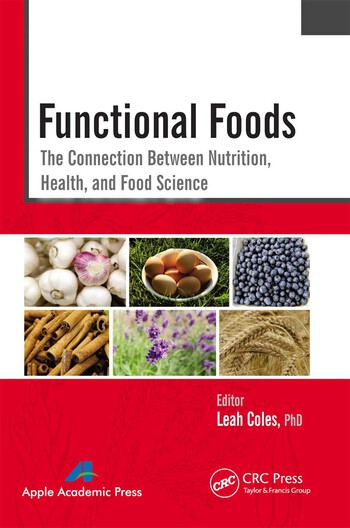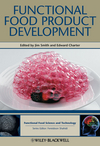Thinking Out Loud: Processors Meet Functional Food Challenges
Last Fall, Prepared Foods conducted its annual survey on current trends and growth opportunities for functional foods, functional beverages and dietary supplements.
Study DetailsToward the end of 2012, Prepared Foods approached 8,801 active, qualified PF subscribers who gave their job title as R&D, QA/QC, Marketing, Sales, General Management/Administration or Purchasing-related. A systematic, random sample from the domestic circulation (on an Nth name basis) was used. Total respondents numbered 169. The survey was conducted via the Web. Upon completion of the fieldwork, the results were tabulated using SPSS statistical software package. The data produced were presented in graphical and tabular format with the number of respondents who answered that particular question. The number may change throughout the report, since some respondents skipped or incorrectly answered a question. Some questions in the survey were “open-ended,” requiring a text response. Other than minor editing for typos, grammar and readability, these responses have been presented as entered. When asked to describe their title, 43% of respondents claimed a spot in the Research & Development (president/VP of R&D, food tech, chemist, scientist, chef, project manager, lab tech, etc.) category. QA/QC (quality assurance manager, quality-control manager, QA/QC personnel, etc.) landed 23%, and 22% chose General Management & Administration (president, owner, partner, vice president, general manager, manager and assistant manager, etc.). The remaining title categories claimed included: 4% each as Marketing (category manager, brand manager, product manager, marketing director, marketing manager, etc.) or “other;” and 2% each as Sales (VP of sales, director of sales, sales manager, etc.) or Purchasing (purchasing director/supervisor, purchasing agent, buyer, etc.). Other mentions included: Regulatory (three individuals); Engineer (two individuals), and one respondent whose listed job is “Forecasting.” When asked which types of functional products their company develops or markets to consumers, respondents answered for the following categories:
A third (32%) of respondents worked for small companies (1-49 employees); 12% for companies of 50-99 employees; 21% with 100-249 employees; 14% in companies of 250-499; and nearly a quarter (22%) for companies of 500 or more employees. They were scattered throughout the country, but the largest grouping (40%) work in the Midwest; 23% are employed in the South; 20% in the West; and 17% in the Northeast.
|
Each year, BNP Media Inc.’s Market Research Division carries out a comprehensive study to evaluate trends and growth opportunities, as determined by and discussed among industry professionals. Specifically, the research is designed to identify to processors the importance of various health and wellness issues when developing products. Also investigated is any expected change in importance of functional food ingredients for the subsequent year. The respondents are given an opportunity to describe their (and their company’s) involvement in specifying and formulating with functional ingredients, and to
describe what they perceive as the greatest barriers to the successful launch of a new product.
Functional foods dominate the market right now, with 51% of companies developing and/or marketing them to consumers. And, 28% of companies develop or market non-dairy functional beverages. But, in doing so, food and beverage makers take on tasks that involve multiple added layers of processes, including hurdles that run from technical, economical and regulatory issues to economic and ingredient-sourcing pressures that do not impact manufacturers of traditional versions of the same products. “R&D is a very slow and expensive process,” as one processor succinctly expressed.
“There are two main issues that are technically challenging,” noted Peter Cokinos, a vice president of Little Lady Foods Inc. “First, to design a product that will make it through the distribution channel; and second, to make sure that this product will make it to the consumer still fully functional and ensuring it reconstitutes well when used, given the variability of equipment and skill among home consumers.”
Specific challenges along that gamut pointed out by survey-takers include: “finding the right formula of product;” “coming up with a comparable taste to non-functional foods;” “creating breakthrough technologies for delivery [of nutraceutical compounds];”“biochemical properties of the food;” “finding suppliers for the ingredients;” “getting information to the retailers, consumers, distributors and brokers;” and “pricing and revenue” challenges.
As with any project, the step-by-step process of functional product development begins with information. So, once it is determined which respondents are currently developing or marketing functional foods, beverages or supplements for consumers (91%), or planning to do so within the next two years (the remaining 9%), they were asked about their sources of information for all logistic ingredient needs. Suppliers and trade journals emerged as the top two sources where manufacturers first find out about new nutraceutical/nutritional ingredients.
The specifics regarding information sources for nutraceutical and nutritional ingredients for formulation broke down as one third (33%) acknowledging suppliers and almost another third—30%— pointing to the trade journals, as described above. But, scientific journals bring first contact with nutraceutical and nutritional ingredients to another 16%, and water-cooler talk—colleagues—account as the first introduction source for another eighth. (See chart “Source of Information about Nutraceutical/Nutritional Ingredients.”)
Interestingly, few bosses seem to be plugged into this information-feed function: Only 4% of respondents noted their supervisors/administrators as being the first source of information for specific nutraceutical and nutritional ingredients.
Once introduced to the hot ingredient trends, makers of functional foods and beverages will be seeking additional information, of course. This is one of the first stages where ingredient providers need to bring their A-game, because more than half the time (54%), manufacturers indicated they get their primary information —data on when and/or how to formulate with a new nutraceutical or nutritional ingredient—from suppliers.
Taking Issue
When it comes to the key health concerns that drive the creative machine of food and beverage developers, this year’s survey looked at 15 “general wellness issues” (gleaned from multiple studies) that Americans have expressed as important to them. By asking respondents to rank the importance of these conditions across a spectrum, from “not at all” to “extremely” important, they fell, in decreasing order, as: Weight Management, Cardiovascular Health, Digestive Health, Diabetes, Energy/Performance, Cancer, Cognitive Health, Immunity, Joint Health, Aging Concerns of Women (includes menopause), Aging Concerns of Men (includes prostate health), Sports Performance, Eye Health, Personal Issues (includes sexual health) and Beauty from Within. (See chart “Important Product Development Factors.”)
Looking only at the conditions ranked as “extremely important,” the top five are: Weight Management (32%), Cardiovascular Health (19%), Diabetes (17%), Cancer (15%), Energy/Performance (14%) and Immunity (12%). While Beauty from Within—for years a big topic in Europe and Asia—has been a recently recognized concern among U.S. consumers, only 2% of respondents felt it was “extremely important” and, even including those who term it a “very” and “moderately” important issue, did not bring to half the number of those who are concerned about this category.
When ranking these issues as business concerns vs. general concerns, the order of importance shifts slightly. Also, surprisingly, the crucial nature of Weight Management diminishes by a third. It still ranks a number one position, but only 22% of those polled found it to be “extremely” important as a business issue. Cardiovascular Health dips only slightly to 16%, and Digestive Health picks up a few percentage points to 14%, but it ties with Energy/Performance, which climbs higher as a concern when considered from a business standpoint.
Diabetic Benefits also see a slight increase in interest as an important business issue and, surprisingly, that concern ties (with an invigorated attention) to Sports Performance as a category, at 12%.
For both sets of data—health topic interests as a general concern and as a business concern—Personal Issues landed near or at the bottom. As that category specifically included sexual function, it begs the question whether the health-obsessed Baby Boomers currently driving much of the functional food and beverage categories concede to their age in the bedroom or leave it to the pharmaceutical industry to take care of any deficit in that department.
Making it Happen
Once a health issue is deemed important to one’s business model, it’s not just a matter of zeroing in on one silver-bullet ingredient to address it. The portfolio of ingredients—and ingredient combinations in systems—needed to address these primary health concerns has been broadening as nutrition researchers make new discoveries.
Subsequently, the growth in demand for functional products drives the research and, in turn, disseminates knowledge in a field once reserved for the ivory towers of academia. Ingredients once rarely on the radar of all but an elite cadre of nutrition biochemists have ended up in the vernacular of processors, as well as Jane and Joe Sixpack.
Annual surveys of American consumers conducted by the International Food Information Council have found increasing awareness of once-arcane nutraceutical ingredients, such as lycopene and resveratrol. For some ingredients and ingredient classes—for example antioxidants and probiotics—upward of eight in 10 consumers possess at least some knowledge of the connection between those ingredients and specific health conditions.
In asking processors what they predict will be the “most important ingredients” to future functional product development, more than 60% of respondents expect functional sweeteners (63%) and ingredients for weight management (61%) to become more important to their product line during the next year. At least half of respondents also expect antioxidants (53%), probiotics/cultures (52%) and ingredients for heart health (50%) to become more important. (See chart “Importance of Ingredients in Company’s Product Line.”)
So, what ingredients did processors deem the “least important” ingredients to their future business? An even fifth—20%—of respondents noted they expected ribose to be less important to their product line during the next year. Almost that many, 19%, expect spirulina/algae and casein to become less important (this in spite of an uptick in popular interest for the former and a massive marketing campaign to promote the latter).
Getting it Right
Functional food makers use the confluence of the above-mentioned information streams to help decide what on-trend products to create. For that reason, the respondents to PF’s survey ranked the importance of 47 functional ingredient groups and specific functional ingredients to their company’s product lines for the coming year.
“The most technically challenging aspect of creating new functional beverages is ingredient availability, lead times and minimum commitments from qualified suppliers,” says Andrew Dun, a vice president at Insight Beverages Inc. “We can get sample ingredients to make protocepts in our lab. However, commercializing products with large-scale customers can be risky if the ingredient is difficult to obtain, requires a long lead time or has a high order minimum.”
Ingredient quality and reliability also is a consideration. “Since Hippocrates said, ‘Let food be thy medicine and medicine be thy food,’ just as we are very precise about how medicines are made and stored, we must also take care that nutraceutical ingredients are well-sourced,” stated Lucy Gibney, M.D., chairman and founder of Lucy’s LLC.
“It’s important these ingredients are processed and stored for optimal purity, especially when we think of compounds that must remain metabolically active,” Gibney avers.
Another question asked: “During the next year of your company’s product line, do you expect the following ingredients to become more important, less important or stay the same?” Of the survey respondents, the top answers were functional sweeteners, including stevia, agave, monk fruit (lo han guo) and madhava, etc.; with nearly two thirds (63%) determining this class to increase in importance to their companies’ product lines.
Ingredients for weight management are perceived to be the second-most likely to increase in importance to manufacturers, at 61%. While this topped the list of health issues to which formulators are paying attention, it should be pointed out that functional sweeteners play one of the, if not the most, significant roles in weight management products. So, there is no dichotomy—this “exception” proves the rule, as it were.
Antioxidants (not including fruit/vegetable extracts or powders), probiotics/cultures and ingredients for heart health rounded out the top five, with around half of respondents pegging them as increasing in importance in the coming year (50-53%).
Dietary fibers/prebiotics/gums/lignans; omega-3 fatty acids (EPA, DHA, ALA); whole grains/seeds; and superfruits (açai, acerola, pomegranate, berries) are predicted to be of greater importance next year by slightly less than half of respondents, yet few respondents predict any of the long list of popular nutraceuticals and macronutrients are going to fall in importance.
There were some exceptions, however. Approximately 14-17% of respondents suggested the importance of the following ingredients could decline in 2013: whey; flax and chia; plant proteins (such as soy/isoflavones); and functional starches (resistant starch, maltodextrins, polydextrose).
Beyond targeting specific issues and choosing ingredients, there are the physical and logistic trials of putting it all together to create a viable result.
“When developing a functional food or beverage, one of the biggest challenges is combining different types of ingredients to make an end-product that fits the finished product intentions,” commented Jason Mathews, group manager of innovation for Michael Foods Inc.
“An example of this is adding proteins to a product that can be denatured by heat. A protein’s structure is altered by heat, which can render it incapable of functioning. Depending on the protein molecule and the circumstances surrounding the denaturation, the alteration can be either temporary or permanent. Yet, with carbohydrates, high heat is sometimes necessary to attain desired textures and integration,” stated Mathews.
Mathews also pointed to how various conditions of processing affect micronutrients, as well. “Some functional compounds, such as vitamins and minerals, or certain botanicals, can be destroyed by heat, while others are concentrated and also need different mediums for solubility; literally a ‘mixing oil and water’ challenge. At the end of the day, it’s really about testing various ingredient combinations to ensure they come together to get the desired functionality.”
The High Cs
So, that high-fiber, omega-infused, yerba maté-laced, wild-blueberry-and-pea-protein shake has now been created; now it’s time to get it on the shelves. This is where respondents were asked what they feel is the “greatest barrier to product-launch success.” This open-ended question garnered nearly 70 different answers! And, while the three Cs of “competition,” “costs” and “consumer acceptance” scored high, the biggest barrier has to do with regulations when it comes to making, labeling and marketing.
“There’s no regulatory clarity around labeling of claims,” wrote one respondent, expressing the now-constant “fear of being sued” many manufacturers have to face.
Several respondents cited competition from the less-scrupulous functional product companies in the industry, complaining: “The market is flooded with bogus products that do not live up to their claims, making consumers wary of all similar product claims.”
“Misinformation provided by special interest groups” and “negative media” came up as issues, as well.
Some challenges were of a more existential nature, such as one processor’s recognition of the over arching goal of “changing the mentality” of American consumers toward thinking in terms of preventive health.
Added to the perennial worries mentioned, such as economic woes, competition, shelf-space, struggles with distribution, and dealing with brokers and retailers, the manufacturing experts taking this year’s survey offered plenty to ponder in the year ahead.
However, there’s comfort in the knowledge that the demand for functional foods, beverages and other nutritional products continues to expand. Processors are armed as never before with the tools and ingredient systems needed to fulfill consumer needs for these better-for-you creations.
Looking for a reprint of this article?
From high-res PDFs to custom plaques, order your copy today!






